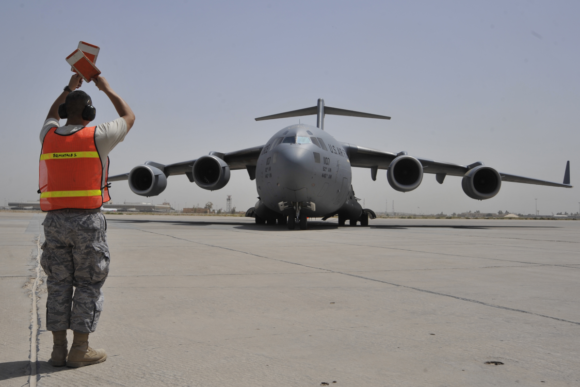Space-Available (Space-A) travel offers military servicemembers, veterans, and their families a unique and cost-effective way to fly on military aircraft. Managed by the Air Mobility Command (AMC), this program provides an invaluable opportunity to travel for free or at minimal cost, albeit with certain limitations and requirements.
Recent Developments and Current Policies
As of April 22, 2022, the Office of the Under Secretary of Defense lifted all restrictions on Space-A travel that had been in place since March 2020 to curb the spread of COVID-19. While restrictions have been lifted, travelers should be aware that mask mandates and medical screening protocols may still apply depending on the destination and prevailing health guidelines. Staying informed about current health policies is crucial for ensuring a smooth travel experience.
The Evolution of Space-A Travel
Space-A travel has come a long way from its earlier days when servicemembers had to physically report to military terminals or fax paperwork to sign up. Today, the process is more streamlined and convenient.
Servicemembers and their families can sign up via email and check their travel status by contacting the passenger terminal. Flight schedules are commonly posted on the official Facebook pages of each AMC Passenger Terminal, making it easier to stay informed and plan accordingly.
There is a large, public (though not official) Facebook group dedicated to providing information on Military Space Available travel. You can find the group here.
This modernization has significantly improved accessibility and efficiency for all eligible travelers.
Jump to our full AMC Passenger Terminal Directory below by clicking here.
Navigating the Roll Call and Priority System
Travelers who wish to fly Space-A must check in at the passenger terminal and participate in a roll call for their chosen flight. Space-A passengers are selected based on a priority system that categorizes travelers by urgency and eligibility, followed by the date and time of signup.
Emergency leave and environmental morale leave travelers hold the highest priority, but understanding the nuances of each category can significantly improve one’s chances of securing a seat. Proper planning and timely sign-up are critical to navigating this system effectively.
Space-A Categories
Space-A travel is organized into six categories, prioritizing travelers based on urgency and eligibility:
- Category I: Emergency Leave
- This category includes unfunded travel for active-duty members on emergency leave. Due to the urgent nature of the travel, it is the highest priority.
- Category II: Environmental and Morale Leave (EML)
- Accompanied EML for active-duty members and their dependents falls into this category. It is designed to support the morale and well-being of servicemembers and their families.
- Category III: Ordinary Leave and Relatives
- This category encompasses ordinary leave, relatives, house hunting, Medal of Honor recipients, and foreign military personnel. It offers significant flexibility for various personal and family needs.
- Category IV: Unaccompanied EML
- This category is for unaccompanied environmental and morale leave, providing travel opportunities for servicemembers without their dependents.
- Category V: Permissive TDY
- This category includes non-house hunting permissive TDY, students, dependents, and post-deployment/mobilization respite absence. It covers a broad range of permissive travel scenarios.
- Category VI: Retirees and 100% P&T Disabled Veterans
- This category includes retirees, dependents, reservists, veterans with a permanent service-connected disability rated as total, and surviving spouses of service members who died on active duty. It provides access to Space-A travel for a wide range of eligible individuals.
Required Documentation
Travelers must complete a Space-A travel request (Form 140) and provide a valid military or veteran ID. A passport or visa may be necessary for international travel. Ensuring that all documentation is current and accurately reflects eligibility status is essential.
Travelers should carry copies of orders, leave paperwork, and any other relevant documents that may be required by the passenger terminal. Proper documentation is crucial for a hassle-free travel experience. For more details, visit our Veteran Travel Tips.
How Space-A Travel Works
1. Identify Your Destination and Possible Routes:
The first step is to learn which bases have regular flights to where you want to travel. This list of worldwide destinations where Space-A travel may be available includes profiles of some of the terminals and information about typical flight destinations. You’ll want to begin following some of their Space-A flight schedules, which we’ll discuss in the next step.
You may find several possible routes to your desired destination. For example, if you are on the East Coast and want to fly to one of the common destinations, including Spain or Germany, you will likely be able to travel from several nearby bases. Travelers from other parts of the U.S. may need to take two or more hops to get there.
The Space-A Travelers Facebook group can help you put together a flight plan to your destination. You can ask questions and find information about flying to and from specific locations.
You may have to combine Space-A travel with other transportation. For example, you may need to fly or drive to a base with regular Space-A flights to your desired destination. Or you may need to take a train or flight from an overseas base to your final destination.
2. Follow the Space-A Flight Schedules:
The Air Mobility Command website maintains a list of all the military passenger terminals, as well as their contact info and links to their websites and Facebook pages.
You’ll find a 72-hour flight schedule for most terminals on their Facebook pages or the AMC website. The schedules include trip destinations, the number of Space-A seats and the “roll call” time. The roll call time is when terminal staff announces who has been selected for the flight.
You may also find information about recently departed flights, including how the number of Space-A seats and how many passengers competed for those seats.
Click here for more details on how to read the Space-A schedules on Facebook.
When you monitor the flights that depart from your target passenger over several weeks or months, you’ll notice patterns in the location and frequency of their missions.
3. Sign Up to Travel from All Possible Starting Locations:
Determine all the terminals you could depart from to reach your desired destination. You’ll increase your chances of success by signing up to fly from all of them. Signing up is free and takes only a few minutes.
The AMC website details the sign-up options, including the required information. You can sign up through their website, by email or in person at the terminal. You can also use the Take-A-Hop app (which costs $6.99). If you’re signing up for several terminals, email and the Take-A-Hop app are the easiest ways to do so.
The sooner you can sign up, the better, as priority within each category is based on the sign-up date and time. So sign up as early as possible. At most terminals, your sign-up is valid for up to 60 days.
Keep in mind that your category may affect how early you can sign up for Space-A travel. For example, active-duty service members (Cat 3) must be on leave before they can sign up. Those in Cat 3, however, have precedence over those in Cats 4 through 6, regardless of when they signed up.
4. Mark Yourself Present Within 24 Hours of Roll Call:
You must mark yourself present at the terminal before roll call to let the staff know that you are competing for the flight. You can do so anytime within 24 hours of the scheduled roll call. Note: roll call times can change unexpectedly, so continually monitor the terminal’s 72-hour flight schedule to ensure you get there in time or, better yet, call the terminal to confirm.
Bring your military ID and any necessary documents, such as your passport, your leave form or your EML orders. If you are an unaccompanied dependent, you’ll need a memo from your sponsor’s command. Also bring a copy of your sign-up email as a backup to prove your sign-up date and time.
5. Listen for Your Name During Roll Call:
At roll call, terminal staff will announce how many Space-A seats are available for the flight and then the names of the selected passengers, beginning with those in the highest-priority category.
If they call your name, go to the desk and confirm that you and any dependents traveling with you are present. You’ll need to show your military ID and any required paperwork, as well as ID cards for passengers older than 10 years old. For younger passengers, bring their passports or MilConnect printouts that show the Department of Defense ID numbers.
If they don’t call your name, don’t leave the terminal just yet. Sometimes last-minute Space-A seats become available, so stay at the terminal until boarding time.
6. Check Your Luggage and Obtain Your Boarding Pass:
Once you and all members of your traveling party, along with all your luggage, must be present when the baggage check begins. This may be right after roll call, or it may be several hours later. You will need to stay in the terminal, as boarding times, like roll call times, can change without notice.
The AMC website’s FAQ page includes detailed information on baggage allowances. Because smaller aircraft may have different weight limits for luggage, it’s best to check ahead of time.
You will generally be allowed to check two pieces of luggage weighing up to 70 lbs each. Similar to many commercial flights, you can also bring one piece of carry-on luggage that fits under your seat or in the overhead compartment. You can usually check car seats and strollers, and they won’t count toward your baggage allowance.
AMC terminals follow the Transportation Security Administration’s baggage screening guidelines, so check their website ahead of time to see what you can bring in your carry-on bag, and what you must put in checked luggage.
Check if meals are available on the flight, as you’ll pay for these when you check your luggage. Some locations offer simple box lunches for a nominal cost.
7. Board the Aircraft and Pick Your Seat:
If you are flying Space-A on a Patriot Express flight, your boarding pass will list your assigned seat.
When terminal staff announces boarding, you’ll go through security and wait in a secure area. With most flights, a bus will take you to the aircraft, and you’ll board from the tarmac.
On most Space-A flights, you’ll choose your seat when you board. On Patriot Express flights, your boarding pass will list your assigned seat.
Practical Tips and Advice
- Monitor Flight Schedules: Regularly check the 72-hour flight schedules posted on terminal Facebook pages and the AMC website.
- Use the Take-A-Hop App: Sign up for multiple terminals efficiently with the Take-A-Hop app.
- Pack Strategically: Travel light to increase flexibility. Under 30 pounds of luggage is ideal.
- Plan for Contingencies: Have backup plans in case of delays or cancellations.
Information on Patriot Express Flights
Patriot Express flights offer amenities, including meals and in-flight movies. Other Space-A flights may have minimal accommodations, so be prepared with your own food, water, and warm clothing.
Pros and Cons of Flying Space-A
There are advantages and disadvantages to Space-A travel.
The Pros: What Are the Advantages of Flying Space-A?
Space-A flights can save you hundreds or thousands of dollars over commercial airlines, which is a clear advantage. The only costs you might incur are a low per-passenger fee on Patriot Express flights, and you may be able to purchase low-cost meals at some terminals that offer meals for purchase.
When you land, you’ll be able to access base resources, including overnight base lodging and the commissary. You may even be able to purchase discount tickets to local events and attractions through the base’s Information, Tickets and Travel office (ITT).
Being able to stretch out on some aircraft can be another advantage over flying economy in a commercial plane.
If you’re traveling with small children, you may also find that other passengers are more supportive than with a commercial airline.
And, of course, there may be a greater sense of adventure with Space-A travel.
Pros
- Cost Savings: Space-A flights can save you hundreds or thousands of dollars.
- Access to Base Amenities: Enjoy access to base lodging, commissaries, and discount tickets through the Information, Tickets and Travel (ITT) office.
- More Space: Some military aircraft offer more space to spread out compared to commercial flights.
The Cons: What Are the Disadvantages of Space-A?
Space-A travel is less predictable than flying commercially. Passenger terminals post flight schedules only 72 hours in advance, and you won’t know if you got a seat until the last minute.
Peak travel times, including summer, winter holidays, and even spring break, are even more competitive. You may need to be more flexible about when you travel and even where you’ll go.
When traveling Space-A, you may incur extra expenses such as transportation to the departure base, and there may be wait times for return flights, leading to additional costs for accommodation and meals.
Finally, Space-A travel, unless you’re on a Patriot Express flight, is bare bones. You may find it cold, loud, and uncomfortable.
Cons
- Unpredictability: Flight schedules are posted only 72 hours in advance, and seats are not guaranteed.
- Potential Additional Costs: Lodging, meals, and transportation costs can add up.
- Comfort: Military aircraft can be cold and uncomfortable, lacking commercial amenities.
Guidance on When to Use Space-A Travel
Space-A travel is best for those with flexibility and patience. It’s not ideal for time-sensitive events or travel during peak seasons. Plan your travel during off-peak times to increase your chances of securing a seat.
Operational Security (OPSEC)
Maintain operational security by avoiding real-time updates about travel details on social media. This ensures the safety and security of military operations.
Seasoned Traveler Insights
Flying Space-A requires planning, patience, and flexibility. Learn as much as you can about the process, and also research desired destinations and passenger terminals so that you can put together a successful flight plan.
When you are ready to leave, make sure you always have a backup plan and ensure you have enough money to pay for commercial transportation if Space-A doesn’t work out. Also, be prepared for a multi-legged journey–several shorter hops that bring you closer to your destination rather than one long direct flight.
Final Thoughts on Space-A Travel
Space-A travel offers a valuable and economical travel option for eligible military servicemembers, veterans, and their families. While it requires flexibility, preparation, and a willingness to adapt to changing circumstances, the opportunity to fly at little to no cost can make it worthwhile. By understanding the priority categories, planning for contingencies, and utilizing available resources, travelers can maximize the benefits of Space-A travel and enjoy unique travel experiences.
In essence, Space-A travel is about balancing cost savings with the realities of military transport. It may not always be convenient or comfortable, but for those willing to navigate its complexities, it offers unparalleled opportunities for economical travel. For more detailed information and updates, always refer to the Air Mobility Command (AMC) website and local military passenger terminal resources. By staying informed and prepared, you can take full advantage of this remarkable benefit and embark on memorable journeys.
For further tips on military travel and benefits, you might find our articles on Veterans’ Travel Discounts, Military Travel Tips, and Retirement Benefits for Veterans helpful. Additionally, you can explore comprehensive guides and updates on military travel on the Defense Travel Management Office website.
AMC Passenger Terminal Directory
AMC CONUS Terminals
- Baltimore-Washington Int’l (BWI), MD
- Commercial: (609) 253-8825
- DSN: (312) 568-8825
- Email: [email protected]
- Website: Baltimore-Washington International Passenger Terminal
- Dover AFB, DE
- Commercial: (302) 677-4088 / 2854
- DSN: (312) 445-4088 / 2854
- Email: [email protected]
- Website: Dover AFB Passenger Terminal
- Fairchild AFB, WA
- Commercial: (509) 247-3406
- DSN: (312) 657-3406
- Email: [email protected]
- Website: Fairchild AFB Air Transportation Function
- Joint Base Andrews, MD
- Commercial: (301) 981-3604
- DSN: (312) 858-3604
- Email: [email protected]
- Website: Joint Base Andrews Passenger Terminal
- Joint Base Charleston, SC
- Commercial: (843) 963-3048 / 3083
- DSN: (312) 673-3048 / 3083
- Email: [email protected]
- Website: Joint Base Charleston Passenger Terminal
- Joint Base Lewis-McChord, WA
- Commercial: (253) 982-7259 / 7268
- DSN: (312) 382-7259 / 7268
- Email: [email protected]
- Website: Joint Base Lewis-McChord Passenger Terminal
- Joint Base McGuire-Dix-Lakehurst, NJ
- Commercial: (609) 754-5023 / 9950
- DSN: (312) 650-5023 / 9950
- Email: [email protected]
- Website: Joint Base McGuire Dix Lakehurst Passenger Terminal
- Little Rock AFB, AR
- Commercial: (501) 987-3118
- DSN: (312) 731-3118
- Email: [email protected]
- Website: Little Rock AFB Air Transportation Function
- MacDill AFB, FL
- Commercial: (813) 828-2440
- DSN: (312) 968-2440
- Email: [email protected]
- Website: MacDill AFB Air Transportation Function
- McConnell AFB, KS
- Commercial: (316) 759-4810 / 5404
- DSN: (312) 743-4810 / 5404
- Email: [email protected]
- Website: McConnell AFB Air Transportation Function
- NAS Jacksonville, FL
- Commercial: (904) 542-8159/3956
- DSN: (312) 942-8159/3956
- Email: [email protected]
- Website: Naval Air Station Jacksonville Passenger Terminal
- NS Norfolk, VA
- Commercial: (757) 341-9912 / 9913
- DSN: (312) 341-9912 / 9913
- Email: [email protected]
- Website: Naval Station Norfolk Passenger Terminal
- Pope Field, NC
- Commercial: (910) 394-1003
- DSN: (312) 424-1003
- Email: [email protected]
- Website: Pope Army Airfield Passenger Terminal
- Scott AFB, IL
- Commercial: (618) 256-3017 / 1854
- DSN: (312) 576-3017 / 1854
- Email: [email protected]
- Website: Scott AFB Air Transportation Function
- Seattle-Tacoma IAP, WA
- Commercial: (253) 982-3504 / 0555
- DSN: (312) 382-3504 / 0555
- Email: [email protected]
- Website: Seattle-Tacoma International Airport Passenger Terminal
- Travis AFB, CA
- Commercial: (707) 424-5774 / 1854
- DSN: (312) 837-5774 / 1854
- Email: [email protected]
- Website: Travis AFB Passenger Terminal
EUCOM Terminals
- Aviano AB, Italy
- Commercial: 011-039-0434-03-7680
- DSN: (312) 632-7680
- Email: [email protected]
- Website: Aviano AB Passenger Terminal
- Incirlik AB, Turkey
- Commercial: 90-322-316-6425/6001
- DSN: (314) 676-6425/6001
- Email: [email protected]
- Website: Incirlik AB Passenger Terminal
- Lajes Field AB, Portugal
- Commercial: 011-351-295-57-3961/3227
- DSN: (314) 535-3227-3961/3227
- Email: [email protected]
- Website: Lajes Field AB Passenger Terminal
- NAS Rota, Spain
- Commercial: 34-95-682-2411
- DSN: (314) 727-2411/2171
- Email: [email protected]
- Website: Naval Air Station Rota Passenger Terminal
- NAS Sigonella, Italy
- Commercial: 39-095-86-5576/6725
- DSN: (314) 624-5576/6725
- Email: [email protected]
- Website: NAS Sigonella Air Terminal
- NSA Naples, Italy
- Commercial: 011-39-81-568-5283/5369
- DSN: (314) 626-5283/5396
- Email: [email protected]
- Website: NSA Naples Passenger Terminal
- NSA Souda Bay, Crete, Greece
- Commercial: 011-30-282102-1275/1383
- DSN: (314) 266-1275/1383
- Email: [email protected]
- Website: NSA Souda Bay Passenger Terminal
- RAF Mildenhall, UK
- Commercial: 01638-54-2248
- DSN: (314) 238-2248
- Email: [email protected]
- Website: RAF Mildenhall Passenger Terminal
- Ramstein AB, Germany
- Commercial: 06371-46-4441
- DSN: (314) 479-4441
- Email: [email protected]
- Website: Ramstein AB Passenger Terminal
- Spangdahlem AB, Germany
- Commercial: 011-49-6565-61-8866
- DSN: (314) 452-8866
- Email: [email protected]
- Website: Spangdahlem AB Passenger Terminal
INDOPACOM Terminals
- Andersen AFB, Guam
- Commercial: (671) 366-5165/2095
- DSN: (315) 366-5165/2095
- Email: [email protected]
- Website: Andersen AFB Passenger Terminal
- Clark AB, Philippines
- Commercial: 011-63-45-499-8157/8396
- DSN: None
- Email: [email protected]
- Diego Garcia, UK
- Commercial: (246)370-2795
- DSN: (315) 370-2795/2745
- Email: [email protected]
- Website: Diego Garcia Passenger Terminal
- Eielson AFB, AK
- Commercial: (907) 377-1250/1854
- DSN: (317) 377-1250/1854
- Email: [email protected]
- Website: Eielson Passenger Terminal
- JB Elmendorf-Richardson, AK
- Commercial: (907) 552-8588/4616
- DSN: (317) 552-8588/4616
- Email: [email protected]
- Website: Joint Base Elmendorf-Richardson Passenger Terminal
- Kadena AB, Japan
- Commercial: 011-81-611-734-6487/2159
- DSN: (315) 634-6487/2159
- Email: [email protected]
- Website: Kadena AB Passenger Terminal
- Kunsan AB, ROK
- Commercial: 011-82-063-470-4666
- DSN: (315) 782-4666
- Email: [email protected]
- Website: Kunsan AB Passenger Terminal
- JB Pearl Harbor-Hickam, HI
- Commercial: (808) 664-7264/7265
- DSN: (315) 447-7264/7265
- Email: [email protected]
- Website: Joint Base Pearl Harbor-Hickam Passenger Terminal
- MCAS Iwakuni, Japan
- Commercial: 011-81-827-79-5509
- DSN: (315) 253-5509
- Email: [email protected]
- Website: MCAS Iwakuni Passenger Terminal
- Misawa AB, Japan
- Commercial: 011-81-176-77-2370/2371
- DSN: (315) 226-2370/2371
- Email: [email protected]
- Website: Misawa AB Passenger Terminal
- NAF Atsugi, Japan
- Commercial: +81 467-63-3118
- DSN: (315) 264-3118
- Email: [email protected]
- Website: NAF Atsugi Passenger Terminal
- Osan AB, ROK
- Commercial: 011-82-505-784-6883/1854
- DSN: (315) 784-6883/1854
- Email: [email protected]
- Website: Osan AB Passenger Terminal
- Paya Lebar AB, Singapore
- Commercial: 65-6280-0624
- DSN: (315) 227-5228
- Email: [email protected]
- Website: Paya Lebar Passenger Terminal
- RAAF Richmond, Australia
- Commercial: 011-612-4587-1652
- DSN: None
- Email: [email protected]
- Yokota AB, Japan
- Commercial: 011-81-3117-55-7111/5661/5662
- DSN: (315) 225-5661/5662
- Email: [email protected]
- Website: Yokota AB Passenger Terminal
CENTCOM Terminals
- Al Udeid AB, Qatar
- Commercial: 011-974-4458-9555
- DSN: (318) 455-9555
- Email: [email protected]
- Website: Al Udeid AB Passenger Terminal
- Bagram Airfield, Afghanistan
- Commercial: 011-93-1-481-5000
- DSN: (318) 431-5000
- Email: [email protected]
- Website: Bagram Airfield Passenger Terminal
SOUTHCOM Terminals
- Soto Cano AB, Honduras
- Commercial: 011-504-2713-5123/4407
- DSN: (312) 449-5123/4407
- Email: [email protected]
- Website: Soto Cano AB Passenger Terminal
- Muniz ANGB, Puerto Rico
- Commercial: (787) 253-7491/5162
- DSN: (312) 860-7491/5162
- Email: [email protected]
- Website: Muniz ANGB Passenger Terminal
NON-AMC CONUS Terminals
- Jacksonville NAS, FL
- Commercial: (904) 542-8159 / 3956
- DSN: (312) 942-8159 / 3956
- Email: [email protected]
- Website: NAS Jacksonville Passenger Terminal
- Norfolk NS, VA
- Commercial: (757) 341-9912 / 9913
- DSN: (312) 341-9912 / 9913
- Email: [email protected]
- Website: Naval Station Norfolk Passenger Terminal
ANG & Reserve Terminals
- Birmingham ANGB, AL
- Commercial: (205) 714-2345
- DSN: (312) 778-2345
- Email: [email protected]
- Website: Birmingham ANGB Passenger Terminal
- Selfridge ANGB, MI
- Commercial: (586) 239-5576
- DSN: (312) 273-5576
- Email: [email protected]
- Website: Selfridge ANGB Passenger Terminal
- Westover ARB, MA
- Commercial: (413) 557-3446
- DSN: (312) 589-3446
- Email: [email protected]
- Website: Westover ARB Passenger Terminal




Comments:
About the comments on this site:
These responses are not provided or commissioned by the bank advertiser. Responses have not been reviewed, approved or otherwise endorsed by the bank advertiser. It is not the bank advertiser’s responsibility to ensure all posts and/or questions are answered.
ray maring says
Thank you for hosting this information. I am a guardsman, retired and are interested in traveling now.